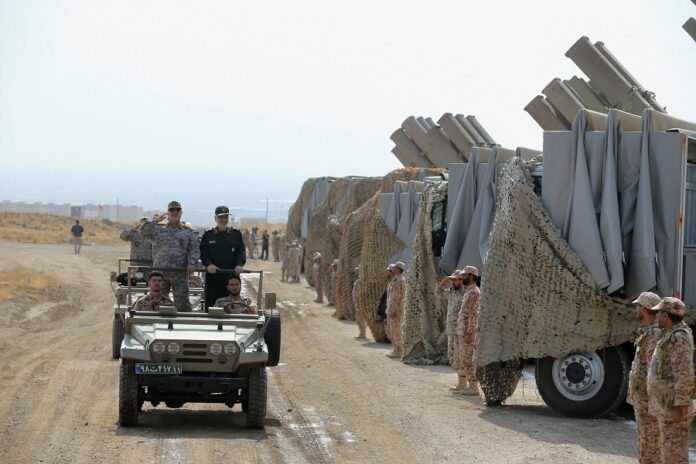
By Phil Stewart and Idrees Ali
WASHINGTON, Feb 9 (Reuters) – More than a month before a deadly drone strike that killed three U.S. soldiers in Jordan, U.S. Defense Secretary Lloyd Austin sought to reassure U.S. troops about the military’s ability to withstand attacks by Iran-backed militants.
Austin, in previously unpublished remarks to sailors aboard the Gerald R. Ford aircraft carrier on Dec. 20, said the number one reason the militants had failed to that point was that “they’re not very good at what they do.”
“Every day, Iranian proxies are shooting at our troops that are in Iraq and Syria. They haven’t been effective at all because (of) two reasons: Number one, they’re not very good at what they do,” Austin told the crew.
“But number two, we’ve done a lot of things to ensure that we have the adequate force protection … Eventually, as we all know, they may get lucky one day and cause injury to one of our troops. But we will stay on the balls of our feet and make sure that that doesn’t happen.”
In the wake of the drone attack, President Joe Biden’s administration is vowing to do whatever it takes to protect U.S. troops from an escalating cycle of violence in the Middle East, where Iran-aligned militants are firing at them in Iraq, Syria, Jordan and off the coast of Yemen in the Red Sea.
Israel Launches New Air Strikes in Gaza After Biden Criticism
But current and former U.S. officials tell Reuters the militants’ periodic success in attacks may be unavoidable, given the sheer number of drones, rockets and missiles fired at U.S. troops and the fact that base defenses cannot realistically be completely effective 100% of the time.
Experts also caution against underestimating the Iran-backed militants, even if most of their attacks fail.
Charles Lister of the Washington-based Middle East Institute recalled former President Barack Obama’s description of Islamic State as a junior varsity team in 2014 even as the group was gathering strength.
“To suggest, Obama-style, that ‘well, they’re just a J.V. team’ and we can chuckle along and take the hits and know that nothing serious is happening is just profoundly naive,” Lister said. “These groups have conducted sophisticated transnational strikes, and they have a very deadly history against American troops.”
Still, U.S. commanders have a long history of putting on a brave face before their troops. Austin is a retired four star general who served on the ground in Iraq, himself coming under fire.
Asked for comment, Pentagon spokesperson Major General Patrick Ryder said Austin was outraged and deeply saddened by the soldiers’ deaths in Jordan and had “no higher priority than protecting our forces and taking care of our people.”
TRAGIC, BUT PREDICTABLE
As of Feb. 7, there have been more than 168 attacks against U.S. troops in Iraq, Syria and Jordan since Middle East tensions surged in October with the outbreak of the Israel-Hamas war. That has caused injuries among 143 U.S. service members, with two sustaining very serious injuries and nine suffering serious injuries.
The worst attack occurred on Jan. 28, when a drone slammed into a U.S. base called Tower 22 on Jordan’s border with Syria, killing Sergeant William Jerome Rivers, Specialist Kennedy Ladon Sanders and Specialist Breonna Alexsondria Moffett.
One senior U.S. military official, speaking on condition of anonymity, called that attack “tragic, unlucky – but predictable.”
“Because that’s the nature of combat. It’s not an antiseptic environment where you can attain perfection” in defending yourself, the former official said.
General Daniel Hokanson, the head of the U.S. National Guard, which had troops stationed at Tower 22 who were wounded, told reporters on Thursday that the military works hard to ensure troops have defenses to drive down the risk.
“Sadly, no system is 100% successful in anything,” Hokanson said.
ANALYSIS: Why the U.S. Is Avoiding Direct Military Confrontation With Iran
NOT A SOPHISTICATED STRIKE
While a U.S. military investigation continues, U.S. officials have told Reuters several factors may have contributed to the failure of American defenses at the remote base in Jordan.
Most notable, they say, was the low altitude that the drone was flying as it approached Tower 22.
But officials say it does not appear the militants did anything particularly sophisticated that Sunday morning, like intentionally timing the approach of the drone to coincide with the arrival of an American drone to confuse U.S. defenses.
Instead, some U.S. officials have concluded that the success of the Jan. 28 strike came down to probability – throw enough munitions at well-defended targets and eventually some will get through.
The militant strike – which the Pentagon says had the “footprints” of the Iraq-based Kataib Hezbollah – has led to a wave of U.S. retaliatory strikes in Iraq and Syria linked to Iran‘s Revolutionary Guard (IRGC) and militias it backs. That includes a drone strike in Baghdad on Wednesday that killed a commander of Kataib Hezbollah.
Ryder, the Pentagon spokesperson, told Reuters the U.S. military continued to “take necessary steps to safeguard our forces who serve in harm’s way, and continuously reevaluate our force protection measures.” He did not offer details on any adjustments to U.S. defenses, citing operational security.
Critics of the Biden administration’s approach caution that the retaliatory strikes do not amount to enough pressure on Tehran, which supports these groups and, some current and former officials believe, could instruct them to stop. Some Republicans in Congress have pushed for U.S. strikes on Iranian forces, including on Iranian soil, which the Biden administration has resisted over fears of drawing Iran directly into a broader war.
“Iran can stop these attacks if they want to,” the former U.S. military official said.
But, the official added: “Why should they? They’re not being hurt by our response.”
(Reporting by Phil Stewart and Idrees Ali, Editing by Don Durfee and Deepa Babington)

